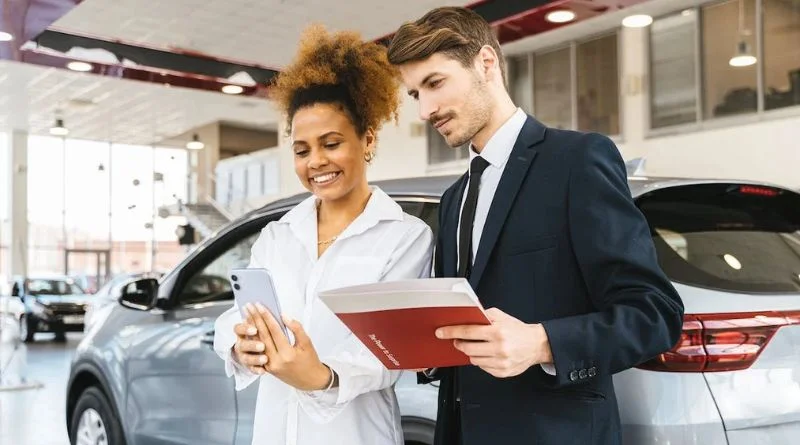What To Do After Purchasing a Vehicle
Last updated on July 19th, 2024 at 10:50 pm
Buying a new vehicle is an exciting time. Indeed, acquiring a new car often evokes a sense of freedom, adventure, and novelty. Many envision a future full of road trips, efficient commutes, and the sheer thrill of speed on an open highway.
However, this euphoria tends to overshadow many necessary and mundane tasks that require immediate attention after the purchase. First, work on getting your documentation and paperwork in order. From ensuring all essential paperwork to becoming familiar with the vehicle’s manual, there are several steps to guarantee an uneventful and satisfying ownership experience.
Insurance is crucial. You must ensure you have the proper coverage in case of life’s accidents and mishaps. Providing adequate insurance coverage is a cornerstone of ownership, and an important second is to keep your vehicle’s maintenance tasks up to date for optimum performance.
While waiting for the delivery or transportation of your new vehicle, you can get more familiar with your car’s servicing and care. In an increasingly digital modern world, some buyers can still face delays receiving their new vehicle and may even question what to do in case of a hold like Carvana delivery delay. It’s important to have patience and communicate with the dealership.
Remember, owning a vehicle is a responsibility far beyond the initial payment and a jubilant drive off the dealership lot. Car ownership comes with a host of responsibilities.
Get That Paperwork Sorted
The importance of correct documentation cannot be overstated. Necessary forms such as the bill of sale, registration, and vehicle title must be correctly filled out and filed. Many states require these documents to be submitted within a specific timeframe, often within 30 days of purchase. Time is of the essence.
Difficulties may arise later, such as during resale or routine traffic stops, without the correct documentation. Therefore, ensuring that all documents are accurate, complete, and filed promptly is essential. Consulting with the dealer at the time of purchase to ensure all forms are in order can prove beneficial.
Take a Peek at the Vehicle’s Manual
The vehicle manual, often overlooked and hidden in the glove box, contains invaluable information about the car’s operations and maintenance. This comprehensive booklet outlines everything from the correct tire pressure to the functions of dashboard indicators.
Taking the time to familiarize oneself with the manual can lead to a better understanding of the vehicle and prevent future complications. Skimming through essential sections is advised to get a general idea of where to find crucial information when needed. Another option is to watch a few videos online to familiarize oneself with features and functions that might not be initially obvious.
Triple-Check Car Insurance
Having adequate insurance coverage is a legal requirement and a vital protective measure. Various insurance packages are available, tailored to different needs and budgets. Your vehicle’s year, type, and model can also impact your insurance premiums. Consider options like trip insurance for longer journeys or additional coverage for extra security on newer vehicles. Always carrying proof of insurance in the car is also essential, as failure to produce this document when requested by law enforcement can result in fines or other penalties.
Take Care of Immediate Maintenance
Even if a vehicle is brand new, it’s recommended to conduct a thorough inspection to identify any issues that may have been overlooked at the dealership. Checking fluid levels, tire pressure and even scheduling an oil change if the vehicle is pre-owned are prudent steps. Neglecting this initial maintenance can lead to operational problems, sometimes as soon as within the first few weeks of ownership. Starting from day one, regular upkeep can significantly extend the vehicle’s lifespan.
Install Essential Accessories
While some vehicles have various features, additional accessories may be needed. From GPS systems for navigation to seat covers for protecting the interior, these add-ons can enhance the overall driving experience. Investing in quality accessories can also contribute to the vehicle’s longevity and resale value. Choosing wisely from the broad range of available options is crucial, as this can significantly affect comfort and functionality.
Conclusion:
Completing the post-purchase steps isn’t just a bureaucratic chore; it’s an investment into long-term safety, satisfaction, and peace of mind. Filing all the relevant paperwork, reading the owner’s manual, ensuring the right insurance coverage, and ensuring the vehicle is in top-notch condition all contribute to a smoother driving experience in the long run.
Moreover, it’s essential to know what to do in different situations, such as what to do in case of a car delivery service delay like Carvana delivery delay. Planning for all contingencies, including delayed delivery, can help mitigate stress and create a rewarding relationship with the new vehicle. No matter how tedious it may seem, each step serves a critical purpose and contributes to the overarching goal of safe and enjoyable vehicle ownership. With these considerations in mind, the road ahead promises to be a literal one and a journey toward becoming a more responsible and informed vehicle owner.




